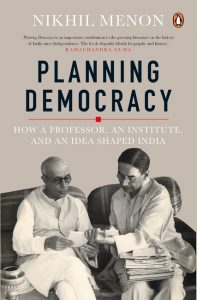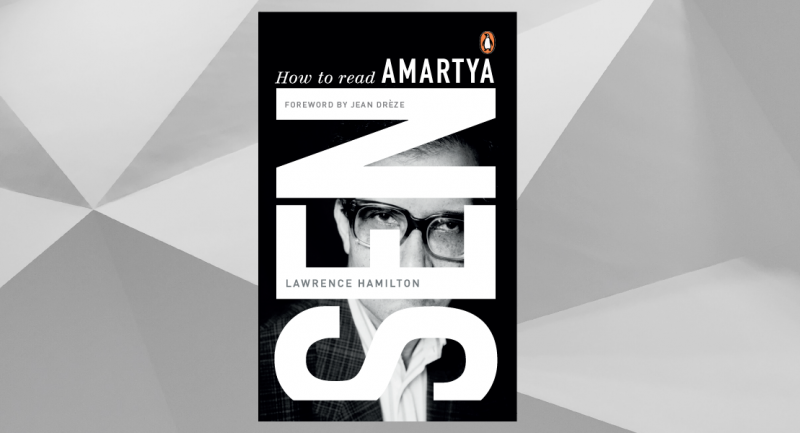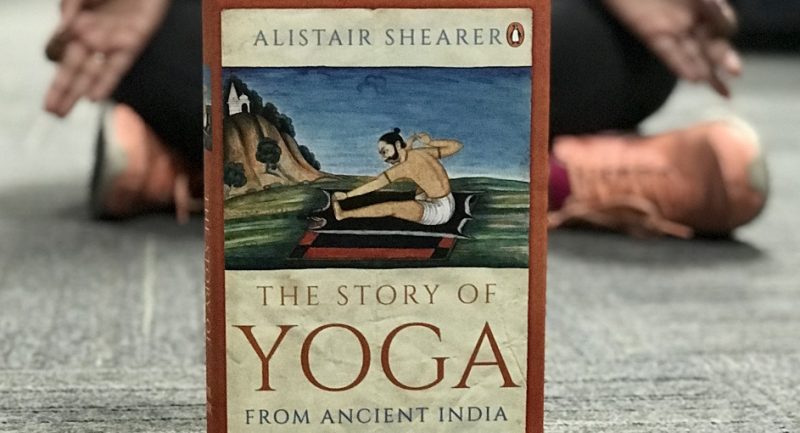
In Planning Democracy Nikhil Menon takes us into the mind of a professor and his quest to make a newly-independent India make sense through statistics. How his bright-eyed vision of straightforward calculations mutated into a complex legacy is what makes this book a must-read for history fans.
The following is an excerpt from the chapter ‘Machine Dreams’.

Planning Democracy
Nikhil Menon
*
From when he first laid eyes on an electronic computer, Mahalanobis was smitten. Amazed by its ability and convinced of its utility to his country’s development, he was soon involved in a quest to bring these machines to India; an affair that would last for most of the rest of his life. In March 1946, while on the east coast of the United States, Mahalanobis heard the scientific genius John von Neumann present a general account of a computer under development at the Institute for Advanced Study in Princeton.
The Professor broached the possibility of developing a computer in India and Von Neumann was open to working on an Indian computer the next winter, but warned that the cost of building it would be steep. Von Neumann assured Mahalanobis, however, that once the first model had been built, subsequent ones would come with a ‘moderate’ price tag—“only 30 or 40 thousand dollars.” The next month, while in New York, Mahalanobis met with statisticians from Columbia University and dropped in at the Watson Computation Laboratory. Based on these conversations he concluded that if statistics were to progress in India it was “essential to build up at least one first rate computation and calculating laboratory.” It was a matter deserving “serious attention at an early date.”
Early next year, with his country’s independence yet months away, Mahalanobis saw a digital computer in operation for the first time. During a visit to Harvard, he was given a tour of the Mark I by computer pioneer Howard Aiken, with whom he spent much of the day in conversation. The reason Mahalanobis hadn’t seen this machine on earlier trips was because “this machine was still a Navy secret.” The Professor soon proceeded to Princeton, where he renewed discussions about computing with Von Neumann. While there, Mahalanobis also made the obligatory pilgrimage to its most famous resident, Albert Einstein, who expressed hope that the transfer of power from British to Indian hands would proceed smoothly.
Increasingly occupied with national income assessment, sample surveys, and planning in India, Mahalanobis believed that computers would prove vital to addressing these questions. Digital computers could perform complex mathematical calculations at hundreds of times the speed of humans. The Professor saw that they would be of tremendous help in tabulating and processing data emanating from the National Sample Survey. Feeding this raw information into a computer, planners would be able to generate estimates and parse trends in the Indian economy in a fraction of the time it would otherwise take. Another major application for computers in the realm of planning was modeling the economy, through inter-industry input-output tables. These tables, first systematized by economist Wassily Leontief in the 1930’s, defined the interrelationship between different sectors of the economy. It was based on the understanding that one industry’s output is often the input for another. The input-output table became a widely adopted method of tracking the movement of goods and services between sectors of the economy, providing a structural snapshot of the entire economy. Leontief began using computers in developing these tables: in 1949 he entered data on forty two sectors of the U.S economy into Harvard’s Mark II, running it for fifty-six hours to create an input-output table representing the American economy. Nearly a quarter century later, Leontief would win the Nobel Prize in Economics, primarily for his work on this technique. The United States continued to conduct input-output research on a regular basis, except for a few years in the 1950s when the Eisenhower Administration had it shuttered—due to its perceived proximity to planning in communist countries.
Never burdened by any formal training in economics, Mahalanobis was instinctively predisposed toward this kind of mathematical abstraction—imagining the material life of India as a series of input-output tables. It was the distillation of a technocratic vision. But quite apart from these applications, the computer was also an object of desire, status, and fantasy. It was chased after as much for the fabulous possibilities it evoked, as the more modest capabilities it delivered. Rare, notoriously expensive, and seemingly boundless in potential, it promised the future and appeared to belong to it. The Professor salivated at the prospect.
*
Read about the surprising history of India’s Five-Year Plans in Planning Democracy, now available at your nearest bookstore.









